Smart Farming Technologies: Transforming Agriculture for the Future
On November 15, 2022 world’s population hit the 8 billion mark.
The United Nations hailed the 8-billion figure as “a testament to humanity’s achievements. The UN also had a note of caution.
“Rapid population growth makes eradicating poverty, combating hunger and malnutrition, and increasing the coverage of health and education systems more difficult,” the UN said.
The UN population report said the global population is growing at its slowest rate since 1950, having fallen under 1 per cent in 2020. The world’s population could grow to around 8.5 billion in 2030 and 9.7 billion in 2050. It is projected to reach a peak of around 10.4 billion people during the 2080s and to remain at that level until 2100.
All this and more will put farming at the global center stage. The growing global population is expected to exert demand-side pressure on farming and crop production across the world. It is understandable. Demand isn’t going to be the only problem. The Covid-19 pandemic also brought out the vulnerability of global supply chains. Last but not least, the climate vagaries will continue to be the ‘X’ factor in farm output.
Will smart farming and allied technologies in agriculture steer the world toward food security?
Smart Farming for Food Safety
The Global Farming industry is facing many food safety challenges like non-standardized pest control, varying weather conditions, and also unpredictable contamination. These challenges are the sources of many diseases that cause great harm to human health. It also could negatively impact the credibility of food producers and manufacturers while exporting food products.
As the food supply chain is getting more and more complex, along with tough local and international food safety regulations, SaaS-based smart farming solutions, can transform the way the entire Agri supply chain is managed.
Such solutions bring observability to agribusinesses, and help them predict any anomalies and take corrective actions to prevent any food safety issue, in a cost-effective way.
What is Smart Farming?
Smart farming centers on growing farm productivity using technology - hardware and software. Smart farming focuses on managing farms, plantations, and all associated farming activities using IoT, drones, robotics, machinery, and artificial intelligence, to determine a path to predictable farm output.
Smart Farming is focused on the use of data acquired through various sources (historical, geographical, and instrumental) in the management of farm activities. Technologically advanced doesn’t essentially mean that it is a smart system. Smart agriculture technologies differentiate themselves through their ability to record the data and make sense of it. Smart farming employs hardware (IoT) and software (Software as a Service or SaaS) to capture the data and give actionable insights to manage all the operations on the farm, both pre-and post-harvest. The data is organized, accessible all the time, and full of data on every aspect of finance and field operations that can be monitored from anywhere in the world.
Differences between traditional and Smart Farming
Implementing robotics in agriculture and other smart farming techniques brings in several benefits over conventional farming strategies. Some of these include exercising increased control over production processes, which in turn enhances cost management and reduces waste generation. In addition to this, smart farming, through the implementation of new technology in agriculture, makes it easier to trace anomalies in crop growth as well as livestock health.
Take a look at some of the key differences between traditional and smart farming practices.
Traditional Farming
The same set of practices for crop cultivation, often unscientific, throughout the region
Imprecise application of fertilizers and pesticides throughout the field
Manual maintenance of all the field and finance data separately, leading to errors and data loss
Geo-tagging and zone detection are not possible
No reliable methods to predict the weather
Use of simple tools by farmers makes the process laborious and time-consuming
Smart Farming
Each farm is analyzed to identify suitable crop varieties and input requirements for optimization and profitability
All farm data is centrally located on a digital platform
Early detection and application of inputs only in the affected region, saving costs
Uses satellite imagery to detect the different zones in farms
Reliable weather forecasts to maximize resource usage and minimize losses
Automation of tasks increases productivity and time- and cost-efficiency
It may sound convenient to place farming as a tech laggard. It is anything but. The momentum from the industrial revolution in the 1800s quickly saw farmers adopt fertilizers, pesticides, tractors, and harvesting machines. The last century has seen farms also adopting complex weather forecasting models with satellite data. The internet has accelerated technology adoption in agriculture. Sensors, IoT, and the internet have made accessible even the remotest farmlands with a mobile tap.
Smart Farming Technologies including IoT
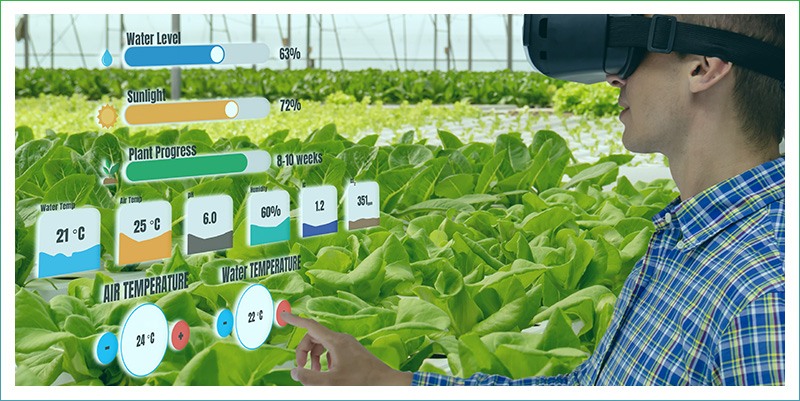
IoT in Agriculture
IoT in agriculture involves sensors, drones, and robots connected through the internet which function automatically and semi-automatically performing operations and gathering data aimed at increasing efficiency and predictability. With increasing demands and shortage of labor across the globe, agriculture automation and robots or commonly known as agribots are starting to gain attention among farmers. Crop production decreased by an estimated 213 crores approx ($3.1 billion) a year due to labor shortages in the USA alone. Recent advancements in sensors and AI technology that lets machines train on their surroundings have made agri-bots more notable.
John Deere, the 200-year-old American farm equipment company is already connecting its ubiquitous tractors to the internet. Farmers now know their tractor productivity on their phones. John Deere extended this to help display crop yields on farmers' smartphones. Thanks to Tesla, the smart car bug has hit tractors too. John Deere is in the works to develop self-driving tractors, which would not just free up farmers' time but also improve farm safety.
The world is in the early stages of an ag-robotics revolution with most of the products still in R&D and trial phases.
Smart Greenhouses
Smart greenhouses are revolutionizing the agricultural industry by creating a self-sustaining microclimate perfect for crop production. Controlled environments allow farmers to eliminate worries of unpredictable weather or predators while harvesting real-time data that maximizes efficiency and improves yields with precision irrigation, temperature control, lighting adjustment, and more.
Semi-automatic robots
Semi-automatic robots with arms can detect weeds and spray pesticides on the affected plants, preventing extensive damage as well as reducing the overall pesticide costs. These robots can also be used in harvesting and lifting. Heavy farming vehicles can also be navigated from the comfort of homes through phone screens to perform tasks and GPS can track their positions at any time.
Drones
Drones in agriculture are equipped with sensors and cameras and are used for imaging, mapping, and surveying farms. They can be remotely controlled or they can fly automatically through agriculture software-controlled flight plans in their embedded systems, working in coordination with sensors and GPS. From the drone data, insights can be drawn regarding crop health, irrigation, spraying, planting, soil and field, plant counting and yield prediction, and much more.
Smart remote sensing
Remote sensing utilizes sensors like weather stations placed on farms to gather data, which is then transmitted to analytical tools for analysis. They monitor the crops for changes in light, humidity, temperature, shape, and size. The data collected by sensors in terms of humidity, temperature, moisture precipitation, and dew detection helps in determining the weather pattern in farms so that cultivation is done for suitable crops. The analysis of the soil quality helps in determining the nutrient value and drier areas of farms, soil drainage capacity, or acidity, which allows for adjusting the amount of water needed for irrigation and the opt most beneficial type of cultivation.
Computer imaging
Computer imaging involves the use of sensor cameras installed at different points on the farm or drones equipped with cameras. The images they capture undergo digital processing to derive meaningful insights from them. They are used for quality control, disease detection, irrigation monitoring, and sorting and grading the produce after harvest. Image processing using machine learning incorporates comparing images from a database with images of standing crops to determine the size, shape, color, and growth, therefore controlling the quality.
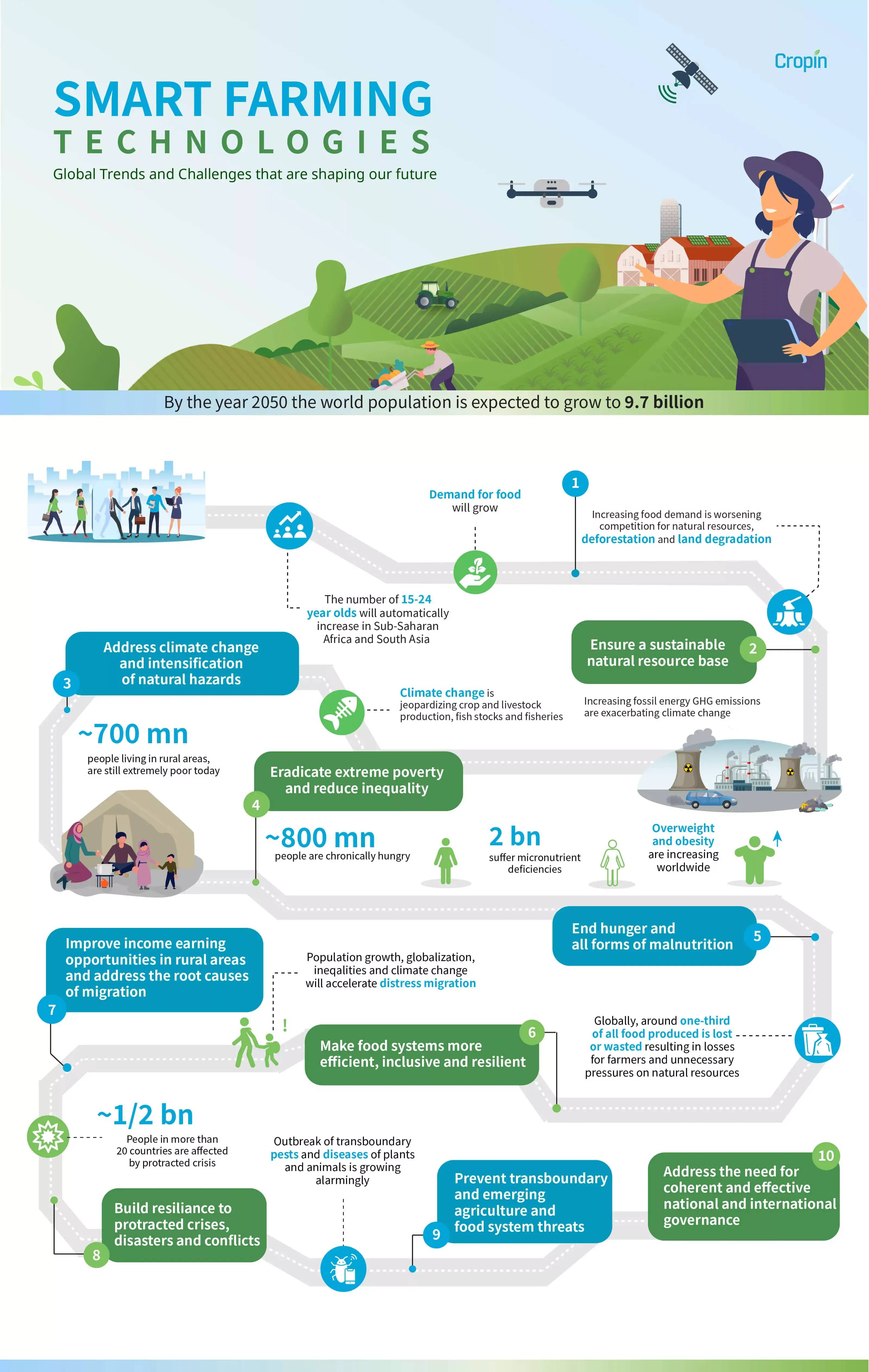
Smart Farming with Saas-based cloud software
Cloud-based software is used for the management of financial and field activities of farms. Prior to computers, farmers maintained data manually by keeping lengthy records on papers. This method was prone to human calculation errors. After the computer boom in the 1980s, it was not long before finance software such as Money Counts came to market. They intended to replace the spreadsheets to maintain the financial data.
The biggest challenge that farmers faced was the inability to manage field data. To address this, around the mid-2000s, satellite image use with tools like Raven Receiver for field zone tracking became widely used. Farmers had to implement and coordinate different tools to manage complete farm operations.
With constant improvements through the years, Agri tech SaaS has become an all-in-one tool for the management of all these activities and more in one place using a single tool. This is also enabling the entire smart farming cycle for good. Agritech cloud software has a strong role play too, in each step of the smart farming cycle.
- Collection - Collecting as much data as possible
- Analysis
- Decision
- Action
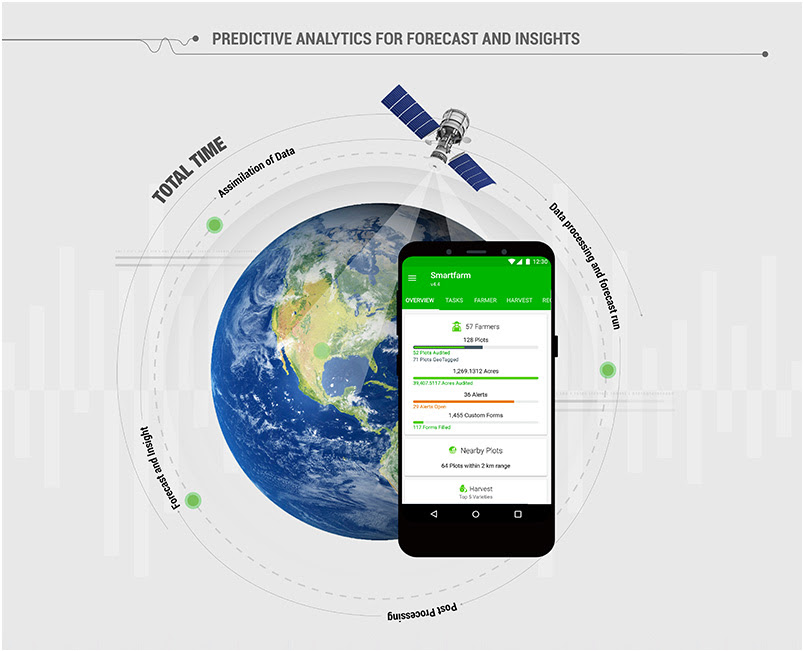
Data Collection
One of the biggest applications of cloud-based software in agriculture is for data collection and retrieval. It stores high volumes of data relating to weather, crop patterns, soil quality, harvesting, and satellite imagery to provide insights with accuracy and speed. All the data related to the farm is stored in the cloud and hence readily accessible. So, if crops are affected by the same symptoms as 10 years ago, the data can be used to find a remedy more quickly than before, preventing extensive losses.
Data Processing Analysis
Database management in cloud software ties up all the loose ends of every type of data available with respect to farms to enable higher levels of decision-making. Meteorological data, market data, farm data, GIS, and water availability. All forms of historical and current data are analyzed thoroughly before giving valuable insights into optimum seed, water, and pesticide requirements for a farm. The systems also have an alert system whenever discrepancies in crop growth are detected. Hence these systems work efficiently in case of pest attack informing farmers with actionable data.
Data Storage and Dissemination
Data storage is the backbone of predictive analysis. Earlier the data storage was hardware-based, hence the infrastructure needed to be carefully maintained and updated. Any damage to the hardware meant the data was gone forever. Nowadays, agritech systems are cloud-based, which means that one need not invest in purchasing and maintaining hardware. All the data is available all the time and can even be accessed through PCs and mobile gadgets. This approach to data storage also makes it accessible for other devices and solutions to consume it for further analysis. The more the data available relating to farms, the more accurate the insights pertaining to crop production and management, pest and disease detection, crop yield estimation, and others.
Smart Farming Applications of Cloud-based Software
Cloud-based software, one of the best outputs in the range of advanced farming technology available now, finds applications with:
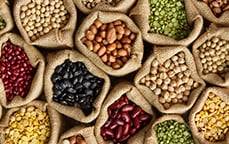
Farming companies - Output predictability
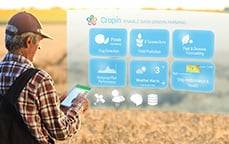
Agri-input companies - Production forecast and quality maximization
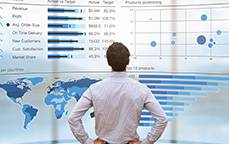
Financial lending institutions - Risk management
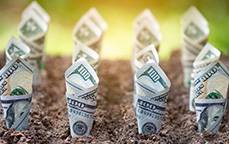
Crop insurance providers - Risk coverage
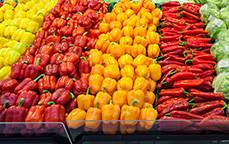
Food production companies - Quality control and compliance

Government advisories - Grass-roots level benefits for farmers
Smart farming is trending with caution
The management consulting firm Mckinsey recently published “Voice of the US farmer in 2022” survey. The survey covered over 1,300 farmers across large, medium, and small farms across the US.
The survey captured farmer responses across many challenges - climate change, geopolitical tension, supply chain issues, inflation, and volatility. The overall sentiment is of caution. Nevertheless, the survey found that farmers are embracing agtech to manage market uncertainty. Agtech adoption has increased in the past 2 years but scaling challenges remain. ROI (return on investment) and poor farmer experience are the main impediments to scaling successfully.
The challenge with scalability was documented well in a similar 2-year-old Mckinsey survey that focused on the value generated by the digital smart farming solution. The survey found that less than 40 percent of respondents self-reported positive returns. The critical success factors were found to be no different than those that mattered in corporate digital transformation initiatives.
- Leadership commitment
- Business case alignment
- at-scale investment
About two-thirds of survey respondents indicated they had just one critical success factor, hinting at a lack of project preparation. Even those with all the success factors in place reported negative results. Yet even some survey respondents with the right ingredients in place still reported negative returns. Perhaps there is more to unravel when making smart farming agtech investments.
At a worldwide level, there is general acceptance that smart farming is the way to go in order to balance the pressure of demand with the need for sustainability.
Climate smart agriculture is here
Climate smart agriculture (CSA) is an approach to agriculture that aims to help farmers adapt to and mitigate the effects of climate change. CSA focuses on three main pillars: increasing productivity, reducing emissions, and improving resilience. One way to increase productivity is to use climate-resistant crops or varieties. For example, heat-tolerant varieties of rice can be planted in areas that are prone to droughts. Another way to reduce emissions is to improve farm management practices, such as using more efficient irrigation systems. Finally, CSA also involves building resilience into farming systems, such as by diversifying crops and using early warning systems for extreme weather events. By adopting climate smart agriculture practices, farmers can help to keep their operations running smoothly in the face of a changing climate.
Smart Farming by Cropin
Smart farming focuses on the application of captured data and combining it from various data sources to show the bigger picture to manage all the activities of the farm. Smart farming is a big leap from traditional farming as it brings certainty and predictability to the table which is the Future of Agriculture.
Robotics, drones, and sensors placed throughout the farms can collect data that can be processed to produce farm insights. Cloud-based software can be used to collect the data from farms and combine them with other sources of data to determine yield output, irrigation scheduling, disease outbreaks, pest infestations, and the like. It can also consume off-farm data, such as market information and dealer availability, to enable informed decision-making post-harvest processes.
As a global agritech, Cropin has worked with 200+ public and private sector organizations worldwide, utilizing deep learning, satellite monitoring, cloud computing, precision agriculture, and other technological advancements to collect, analyze data, and manage all the activities from farm to fork with streamlined farm solutions.
Cropin’s SaaS solution is beneficial for farming companies, lending and insurance institutions, food processing companies, insurance providers, seed production, non-profit organizations, and government agencies.
FAQ
What are the benefits of smart farming using SaaS solutions?
- Readily available and accessible management through smartphones, tablets, and PCs
- Facilitates logging and management of alerts (pest infestations, crop diseases, etc.)
- Incorporates end-to-end solutions for farm-to-fork traceability
- Robust and flexible system for farm management
- Geo-tagging for accountability and accurate predictability
- Configurable package of best practices for each crop variety
- Agronomic advisories based on satellite imagery and weather data
- Higher yield output as input usage is optimized and constantly monitored
- Improved quality due to compliance with food standards and nutrition tracking
- Reduced wastage owing to the precise application of resources and thus reduced production costs
- Traceability and output predictability
- Comprehensive reports and insights
What are the differences between IoT and SaaS solutions to consider before investing in one?
SaaS
- It provides a one-stop farm solution for managing all the operations pre- and post-harvest.
- Highly-skilled labor is not required.
- No equipment other than mobile devices is required on farms.
- Labor logs and chemical usage data are available.
- No devices are required to be placed on farms.
- No hardware maintenance costs.
- Insights are accessible on a laptop or PC.
- It allows holistic supply chain management.
- Data is stored in a secure cloud for easy accessibility.
- It uses publicly available, high-resolution satellite images for farm monitoring and weather data.
- Only a single application is required to manage multiple farms around the globe.
- It is scalable for multi-country implementation.
- Can be integrated with existing devices, IoT devices, and legacy solutions.
- Yearly or monthly subscription plans are available at a low cost.
IoT
- It enables crop production almost anywhere, including urban rooftops.
- It helps minimize the usage of scarce resources like water, energy, and land.
- It enables the automation of processes like sowing seeds, watering, crop monitoring, and harvesting.
- It requires highly-skilled field staff to implement and manage the devices.
- The devices are expensive and fragile.
- It demands heavy initial investments.
- Sensors, robots, drones, and cameras need to be placed on farms to monitor and operate.
- It involves recurring maintenance costs for the hardware.
- Computer imaging is done via sensor cameras and drones with manual operators.
- Each piece of equipment has a defined set of operations and can be used only for specific tasks.
- The use of IoT devices is not scalable to larger regions; each farm’s data has to be managed separately.
Both SaaS and IoT have their own advantages and disadvantages. To know how each can address your concerns and what could be the best fit for your business, read more here.






